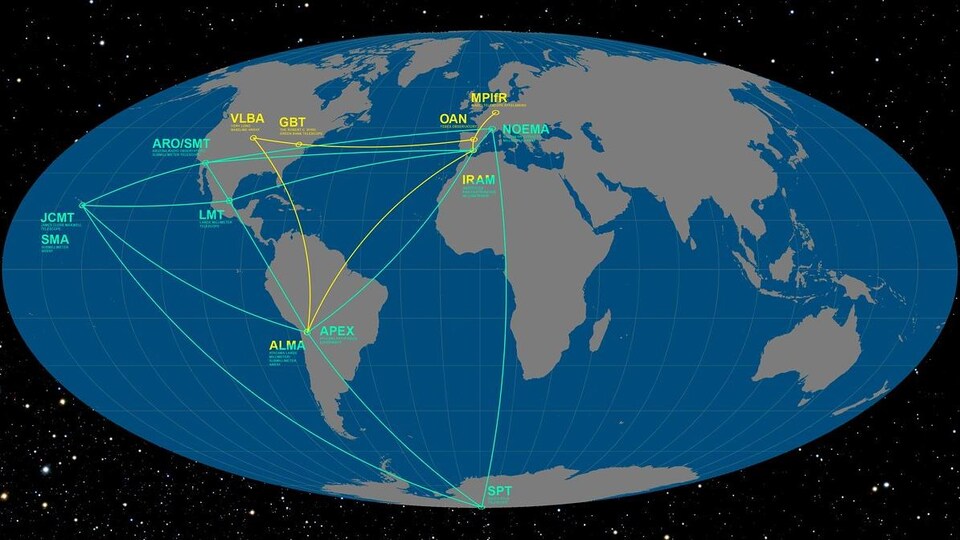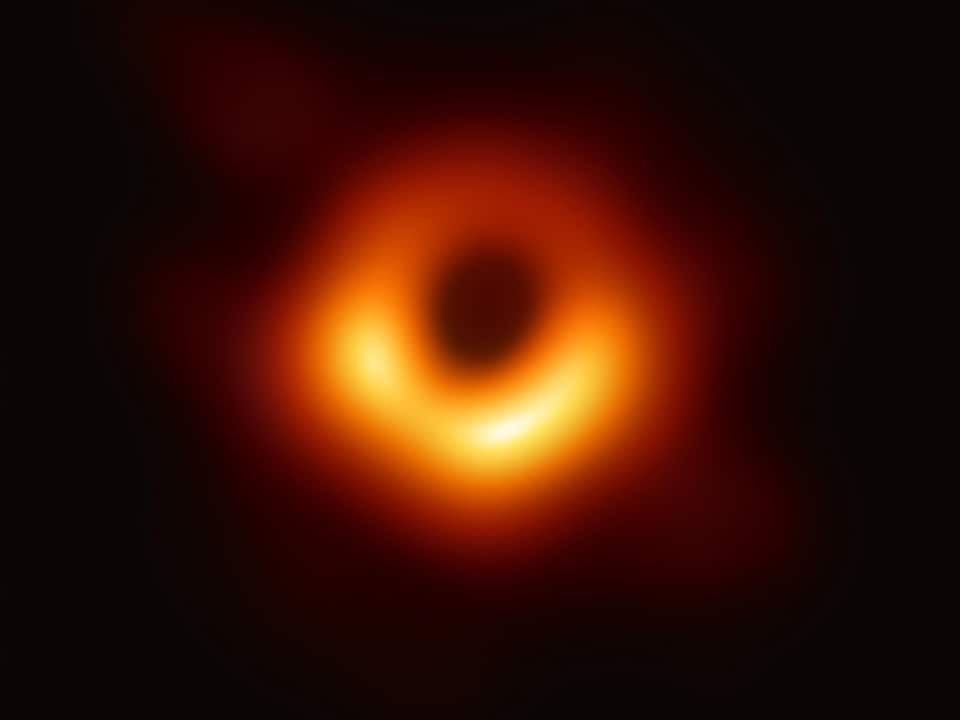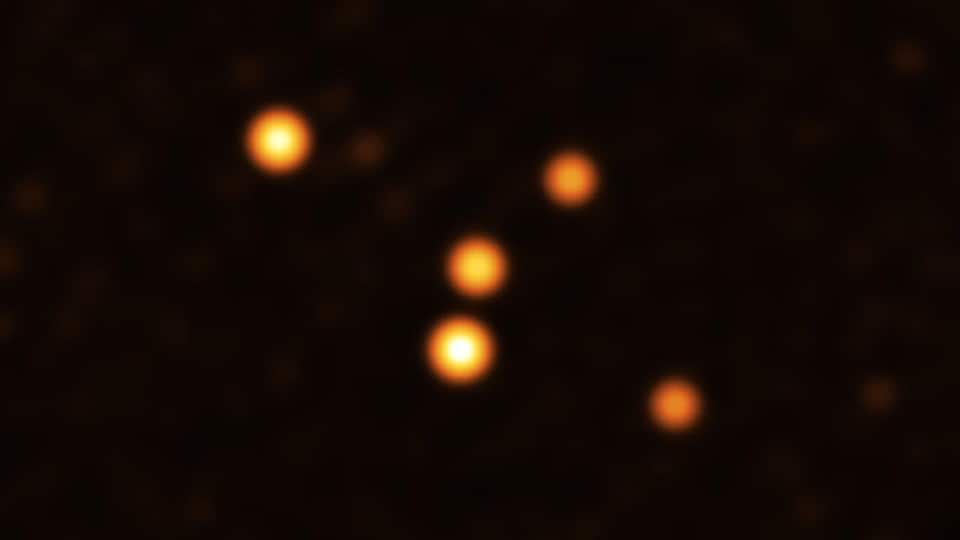The European Southern Observatory (ESO), the American National Science Foundation and their partners invited the media on Thursday, May 12 to unveil the latest “groundbreaking” results obtained by the EHT (Event Horizon ”initiative Telescope). This network of eight terrestrial telescopes located around the world forms the virtual equivalent of a radio telescope several thousand kilometers wide.
The stars seem to be aligned for us to show humanity the very first image of Sagittarius A*, the black hole located in the middle of the Milky Way, but we should not be carried away too fast. When the celestial rumor last ran, in 2019, ESO and its partners showed the image of the black hole in the center of the Messier 87 galaxy instead.
This announcement is less historic, as it is the very first image of a black hole, one of the most mysterious objects in the Universe.
Around Sagittarius A*
Astrophysicist Olivier Hernandez, director of the Rio Tinto Alcan Planetarium, thinks this opportunity would be right. They might tell us they don’t see, but I’ll be surprised.he says with humor.
Hernandez thinks an image of Sagittarius A* is probably similar to Messier 87, but it might also come as a surprise.
” Depending on the angle at which a black hole is observed, the outline can take several forms. It can have the shape of a ring, as is the case with the M87, but it can also have a slightly different shape. […] What is interesting to know from what angle we will look at it. “
If the news is confirmed, the astrophysicists will therefore succeed in showing silhouette of Sagittarius A*, which will prove that the object in the center of our galaxy is indeed a black hole, a region of the galaxy whose gravitational field is so intense that it prevents any form of matter or radiation from entering. escape it.
This silhouette corresponds to the event horizon marking the immaterial limit of entry into the black hole. What we see is the accretion disk, i.e., the gas that is heated and begins to fall towards the black hole.said the astrophysicist.
This plot of the black hole is considered one of the most violent places in the Universe, and the point of no return where everything – i.e., stars, planets, gas, dust and any form of electromagnetic radiation , including light, is irrevocably absorbed. show.
It is better to estimate its mass
The very first image of Sagittarius A* will make it possible to better estimate its mass. Is it as big as the Messier 87? Do we have the same kind of monster within our own galaxy? I do not think so. It’s certainly not that big, but still interesting enough to beexplained Mr. Hernandez.
Dozens of astrophysicists took part in the collective effort to be shown at 9 am Thursday. You should know that each telescope produces large amounts of data, which must then be shared.
Last December, the most detailed and sharp image to date of the region surrounding Sagittarius A* was released at ESO. The Very Large Telescope Interferometer (VLTI) has made it possible to zoom in 20 times more than ever before. This accuracy made it possible to identify a star that had not yet been observed, called S300, near the black hole.
Sagittarius A* is not the only black hole in the Milky Way. There are dozens of stellar black holes that form during the gravitational collapse of large stars at the end of their lives that explode as supernovae. So far, 20 such black holes have been confirmed in our galaxy.
Source: Radio-Canada


